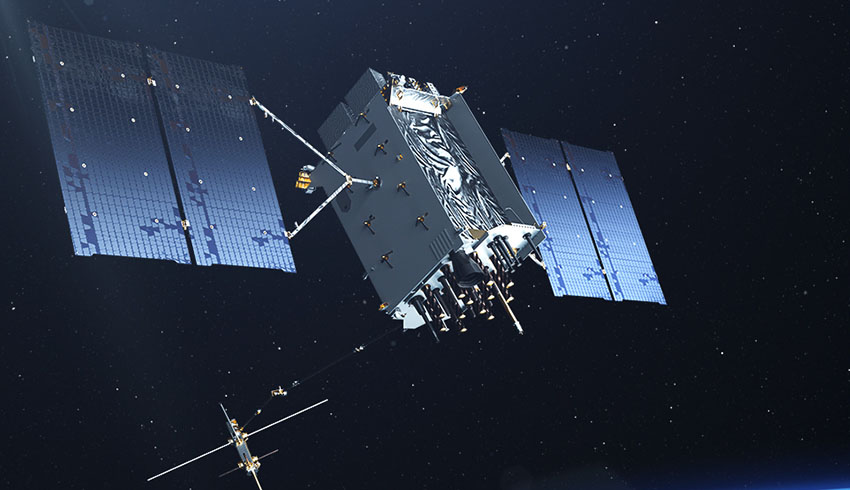The manoeuvre set a new standard for how GPS manoeuvres should be conducted for the squadron that provides precision, navigation and timing signals to billions of users around the world.
A station keeping maneuver is performed to keep vehicles in their node (or parking spots in orbit) and involves burning the satellite’s thrusters and changing the vehicles speed at a particular point in its orbit.
This causes the orbit to change, in turn, keeping the vehicle in the ideal position to provide coverage.
1st Lieutenant Michael Gallagher, GPS subsystems analyst, explained, “All operational GPS vehicles are assigned nodes, when all nodes are filled with healthy vehicles there is good global GPS coverage.
“When new vehicles are launched they typically aren’t launched directly into their final node. This means that the 2 SOPS analysis flight must perform a re-phase manoeuvre to put a vehicle in its node.”
The manoeuvre required GPS III’s signal to be turned off. Turning off the navigation signal while performing the manoeuvre prevents users from receiving inaccuracies generated by a change in satellite velocity.
Senior Airman Harrison Sherwood, 2nd SOPS satellite systems operator, who sent the commands to the satellite during the manoeuvre, added, “This was a new process that we could learn from as it was the first station keeping [manoeuvre] performed for the newest generation of GPS satellites.
“[Since] this was the first [manoeuvre] of the newest generation satellites, it was a bit of a guinea pig for future manoeuvres.”
This procedure was also the first of its kind to be performed with the 2nd SOPS Architecture Evolution Plan, which all active satellites in the program are operated. Since GPS III vehicles are fully integrated into the program with this manoeuvre, all maintenance is conducted through AEP.
2nd Lieutenant Tyler Gorman, 2nd SOPS navigation payload engineer, added, “Station keeping manoeuvres are essential to satellite operations and must be done for regular maintenance. This activity helped validate a nominal maintenance activity for a new generation of vehicles.”
The unit plans to continue to use this new method and program for future GPS satellites that are being launched and need to be re-phased into their operation slots. The next satellite that will need a station maneuver performed is SVN-76, which is scheduled to launch in the next few months.
2Lt Gorman added, “GPS maintenance requires a coordinated effort to ensure our worldwide service is preserved. That means careful planning and execution from our analysts in 2 SOPS, our satellite system operator and the operational support from Lockheed Martin and the Aerospace Corporation.”

